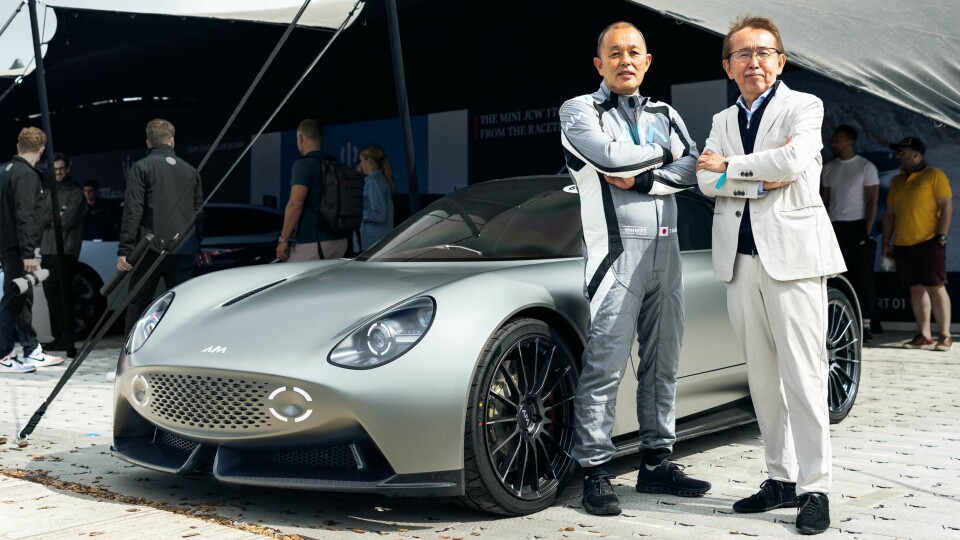
Shiro Nakamura returns with the Aim EV Sport 01
The design legend that defined an era of Japanese design Shiro Nakamura is back with a beautiful concept that harks back to the golden era of 60s sportscar design. Car Design News caught up with Nakamura at the Goodwood Festival of Speed
“When I was designing for Nissan, I wanted to be a representative of Japanese design. This car is a very pure expression of the aesthetic that interested me when I was young,” says Shiro Nakamura. Sheltering alongside his creation, the Aim EV Sport 01, from a torrential downpour at the Goodwood Festival of Speed, Nakamura was in buoyant mood.
Revered as the man who put Japanese design on the map with cars like the Cube and GT-R during 20 years at Nissan, there nevertheless had been little fanfare preceding the designer’s arrival at the show. The steady flow of visitors to the Aim stand, at one point Julian Thomson stopped by, must have been heartening. And no surprise that the car itself is a low-key beauty.
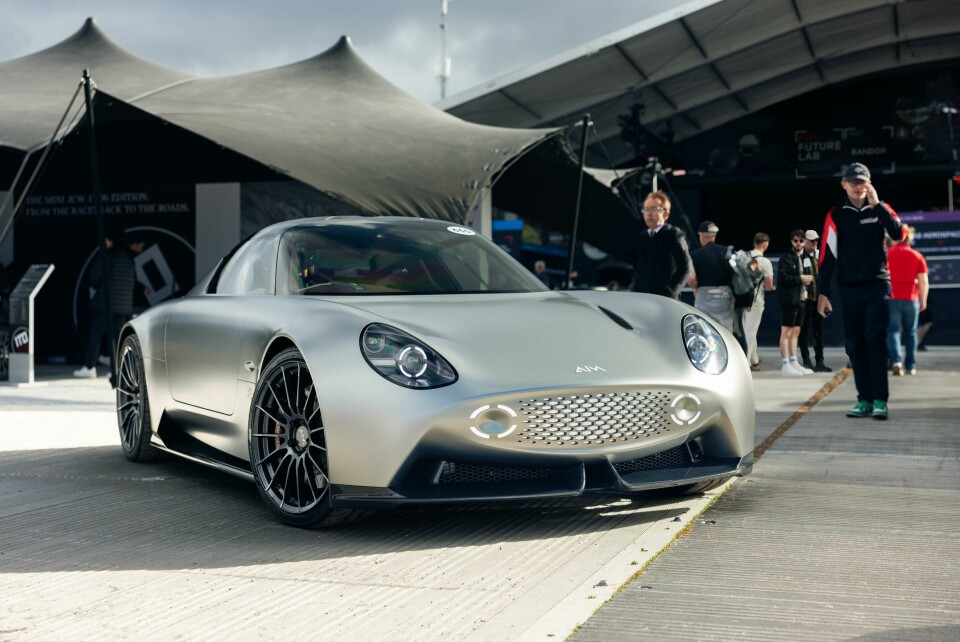
Freed from the constraints of a brand (“a GT-R always had to look like a GT-R”), Nakamura has cast his discerning eye back to European sportscars of the 60s – the period that inspired him to become a car designer all those years ago – and created an homage more than worthy of that era.
The first thing to notice is the size of the concept – at 3.9 metres it is frankly tiny compared to the current behemoths on the road. The humble dimensions betray its origins as a testbed for Aim’s first foray into electric platforms: to date the Nagoya-based company has concerned itself with petrol power. That evolved when the company CEO selected Nakamura to execute an old-school lesson in styling.
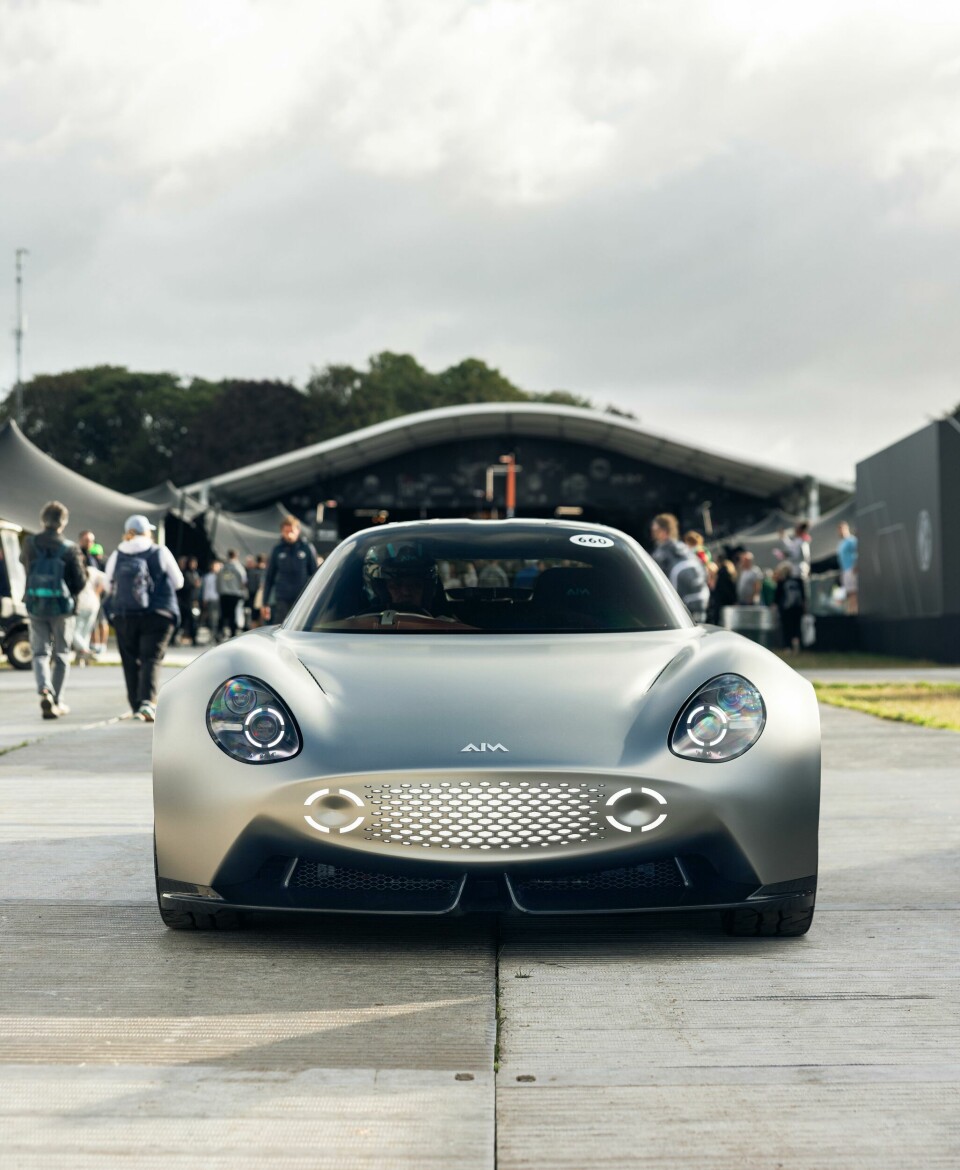
“He’s a car lover like me and we share the same passion – we did not want to make an aggressive 1000hp car. We don’t care about that. It has to be fun to drive and usable.” That said, the concept tips the scales at around 1.5 tonnes – the carbon fibre construction adds lightness – and claims 600hp. It is a good deal quicker than the era it hails.
The front face presents a cheerful countenance: there is more than a hint of DB4 GT Zagato in the headlamps, but the form is softer, more inviting. “Headlamps were originally circles – not like slits, more like eyes. I wanted it to be more friendly or charming. Not angry.”
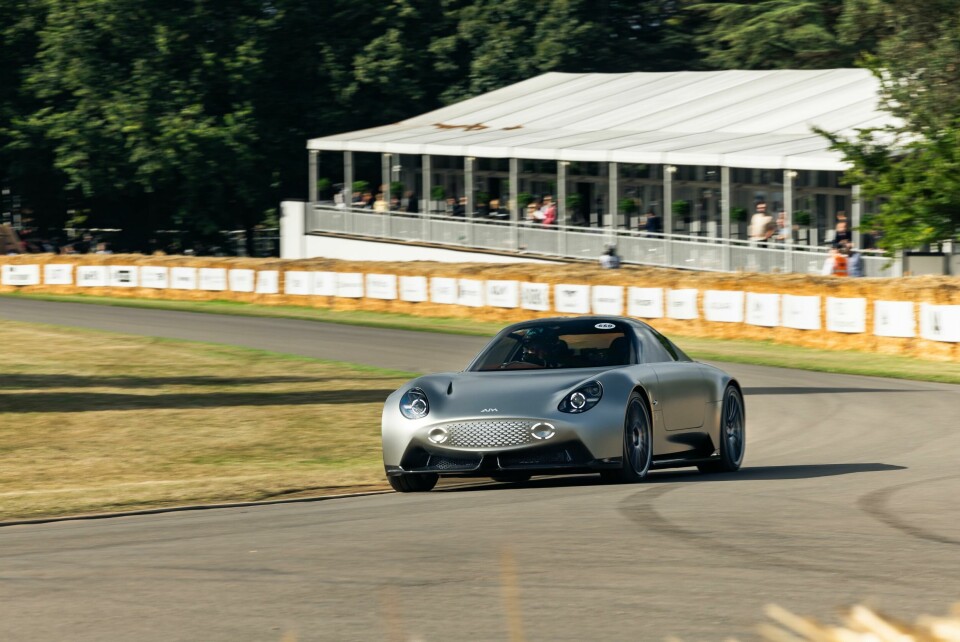
The surfacing is unfussy to the point of minimalist. Strong hood feature lines exaggerate the musculature and extend to a high beltline before pinching in and fading at the rear face. “I didn’t want too many lines,” says Nakamura. “Look at cars from the 60s – how many lines do they have? You don’t need many.”
Speaking of lines, the shutlines running into the glasshouse give away the guillotine doors while the glasshouse itself stretches over what would have been the engine bay were this a combustion type. The rear face is just as well-resolved with the strong stance established at the front continues with rear haunches that are typically well-judged. A pair of oval-shaped rifle sight headlamps add to the sporty feel.
In profile, there is very little tension between the front and rear overhangs, the proportions are beautifully harmonious. “We spent a lot of time working with clay,” says Nakamura. “Going back 30 years, I worked a great deal more with clay. Of course, as the head of design (at Nissan), you cannot touch, you just look. Now I can work with the modellers again – that is what design should be, I feel.”
The interior is driver-focused with minimal instrumentation. The driver display features a central circular screen to convey essential information, but otherwise the Aim is about the driving experience. Toggle switches and circular dials and air vents predominate. The IP is clad in tan leather – a classic material in keeping with the overall aesthetic.
The Aim is a beautiful thing, undoubtedly, but what happens now? “At the moment there is only one car – the company CEO wants to make a limited run. It is not a super expensive 2 million pound car. It needs to be affordable but we have to build a business case for it.”
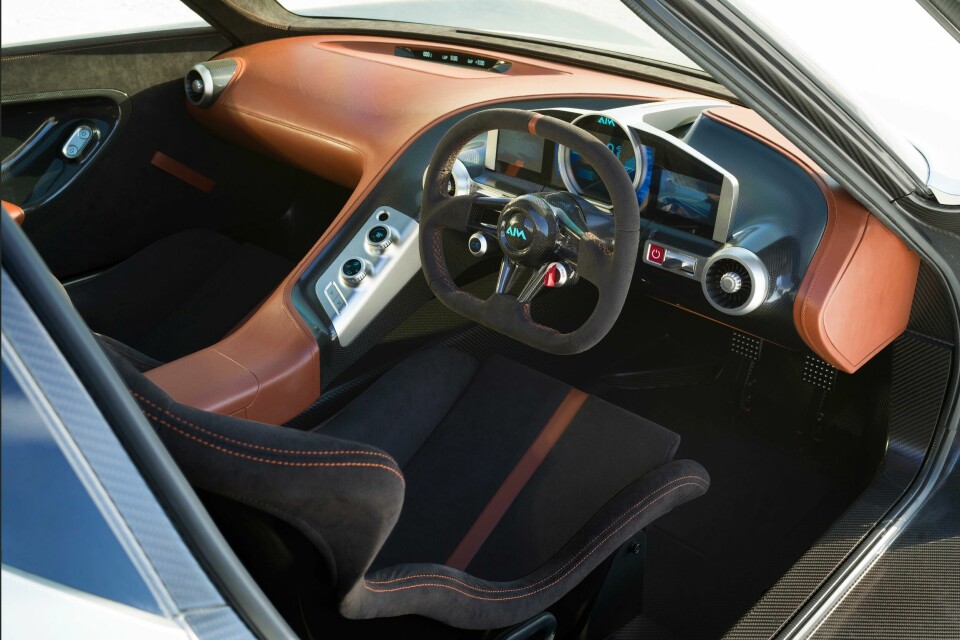
Whether a limited run does emerge, it is great to see a Nakamura design realised once again. And the designer is clearly enjoying returning back to his roots working in a small design team. “When companies get too big it is very difficult to maintain a pure design team,” says Nakamura.
Going further, Nakamura draws parallels with musical history to critique the current state of design. “We still listen to classical music played by modern players. Jazz style and theory were established in the 50s, 60s, and 70’ s and are still evolving. Jazz musicians play classic composition but with new interpretations.
The current style of automotive design has a very narrow direction because they compete with each other. I am now away from the competition of a manufacturing brand. I can design more freely.”












